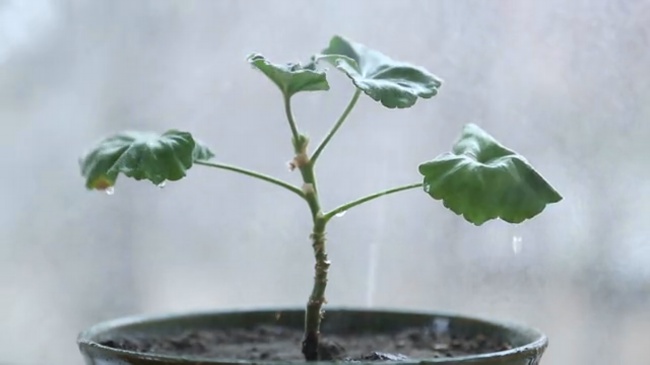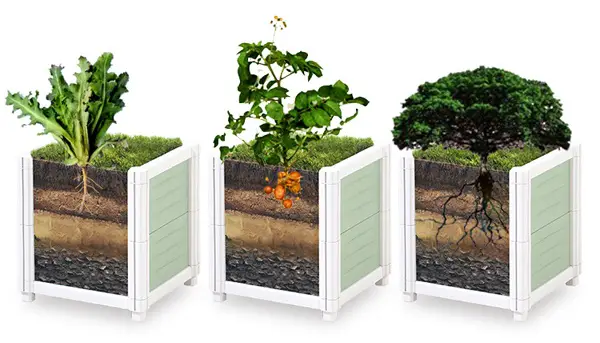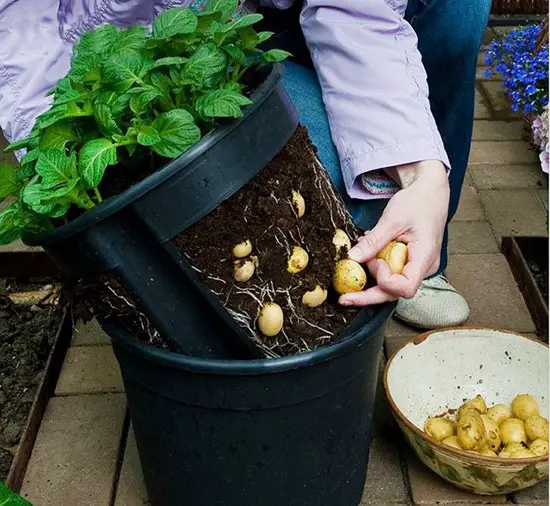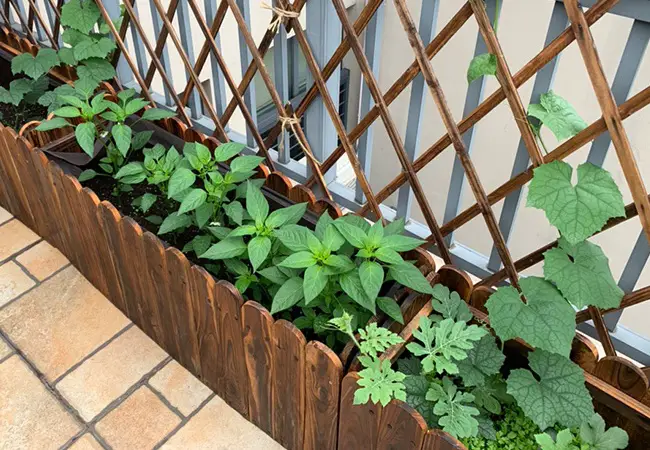I have had several recent emails from herb growers who have tried to grow their herbs indoors but have found that instead of getting a regular supply of fresh herbs, they end up with many dead herb plants after just a few weeks. So why do indoor herb plants die?
First of all, I would like to assure you that herbs can be grown successfully indoors. They adapt well to being treated as houseplants. However, indoor herb plants die more often because they have not been provided with the right mix of light, moisture, and soil conditions. If you don’t get this mix right, your indoor herbs will struggle to survive.
I will provide some tips to help you develop your indoor herb garden.
What Herbs to Grow Indoors?
Eight herb plants can be grown successfully indoors:
- Lavender
- Scented Geranium
- Chives
- Mint
- Thyme
- Chamomile
- Rosemary
- Lemon Balm
I haven’t included basil because it can’t be grown successfully indoors without an appropriate herb-growing kit.
A herb growing kit will provide long periods of artificial light and a tray to maintain moist soil conditions.
If you don’t use a piece of equipment like this, you’re going to find it very hard to grow basil plants successfully.
Conditions for Indoor Herb Growing
As I mentioned above, indoor herb plants die more often than not because the conditions in which they are grown are incorrect.
These conditions include:
- Soil
- Moisture
- Light
Let’s discuss each of these in turn.
Soil
Plant your herbs in 3 to 4-inch pots containing an appropriate soil mix. Ideally, stand the pots on a tray of gravel. The gravel will help to keep them cool and moist.
I plant my indoor herbs in brightly colored enamel pots. These enhance the display of herbs, making a visual contribution to the wonderful aromatic smell of the herbs.
Moisture
Be careful not to overwater your herbs. Too much water is as likely to kill your herbs as too little. From time to time, when you’re watering your herbs, add some liquid fertilizer to the water to encourage plant growth. There are lots of suitable liquid fertilizers available. Before you start using one read the instructions on use provided.
Light
Find a place with lots of light. An enclosed indoor patio area is ideal, but if you haven’t got a space like this, find a south-facing window that gets lots of sunlight. Avoid rooms where the temperature fluctuates widely (e.g., the kitchen). Extremes of temperature will stress the plants and affect their growth.
More Tips in Taking Care of Indoor Plants
Are you thinking of sprucing up your house and enhancing your interior decorations by having some indoor plants? This is a wonderful way to take a piece of nature inside your home. Wouldn’t it be nice to have plants that have clean air spread out in your house?
However, you have to remember that these will require a certain amount of effort on your part to keep them in good condition. So how exactly do you take care of them? Here are some tips.
First, consider the usual temperature inside the room. In general, you should keep plants in a place within the range of 55 – 65 degrees Fahrenheit in the evening and within the range of 60 – 70 degrees Fahrenheit during the daytime.
You need to monitor the temperature to avoid getting damaged by excessive heat or excessive cold. You can use a room thermometer so that you’ll always know when to switch your heater or air conditioner on or off, depending on the situation.
Second, make sure your plants have sufficient water. Read up or ask about how much water your particular plant needs. There are those which need to be watered frequently and those that shouldn’t be “drowned” by excessive watering. Avoid using chemical-treated water on plants.
In fact, one good tip is to fill your watering pot the night before and let the water stand overnight before using it on your plants. If the air in your room is too dry, you may also want to spray water on the leaves of your plant to keep them healthy-looking.
Third, don’t underestimate the importance of sunlight. This is a very important component that must be considered when talking about indoor plants care. The best thing to do is to let your plants receive sunlight only indirectly.
Do not place them in an area that gets hit by direct sunlight because it can cause your plant to become very dry. Avoid placing plants near windows where they can be exposed to the elements such as rain, strong winds, and direct sunlight. Instead, place them strategically in areas where they can get indirect sunlight and nothing more.
Fourth, do some research to find out whether there are specific things you should be doing to improve the health of your particular plant. After all, some plants require special treatment to really blossom.
Giving Good Winter Care to Your Houseplants
If you grow plants indoors, more than likely, they are a variety of houseplants, and houseplant needs good care just as those grown outdoors.
Most houseplants need less sunlight than those grown outdoors, but they do need sunlight. If your home is not particularly sunny, an artificial light, sometimes called a “grow light,” will provide the needed extra light.
Due to some house conditions, some plants will grow slower than others, and some will even go dormant during late fall and early winter.
The temperature for indoor plants should be on average 75 degrees during the daylight hours and 60 to 65 degrees at night. This temperature range will vary, but this is the most common.
Indoor plants don’t like drafts, and placing them in a sunny window is not always a good spot for them. If you do place them there, rotate them every day or so that all sides receive sunlight. Plants experience different temperature changes when you have them in a window; they get sun by day but suffer the cold from the window at night.
Most homes tend to be drier than normal during the winter, and many plants aren’t tolerant of the extra dryness. Except for the “African Violet,” most plants can take a good misting on the driest days of winter. Otherwise, they use a damp cloth or sponge to wipe their leaves every week or two; this is also an easy way to remove dust build upon them.
Use potting soil that is specifically for houseplants. It will generally be well-draining, correctly blended, and balanced with the right amount of nutrients and acid Ph levels. Since potting soil loses minerals over a period of time, re-potting or replacing the top layer of soil every few years is a good idea.
Because they grow slower, indoor plants need less fertilization, so when you fertilize, use a balanced slow-release fertilizer for indoor plants and then only fertilize every two or three weeks.
Learn something about your houseplants before you purchase them. The small plant stakes stuck inside the pot are a good source of information. It will tell you how and when to water and how much to feed in most cases.
Most plants love good soaking, so apply water to the plant to the point that it drains out of the bottom openings. This will also get rid of any excess fertilizer.
Let the soil become almost dry before watering again. If possible, use distilled water to water your plants; many people don’t realize that regular tap water sometimes contains excess salt and chlorine. If you must use tap water, let the water set out for a few days, and the extra chlorine will dissipate, and then generously water plants.
Harvesting the Herbs
Once your indoor herbs are well-established, you can begin harvesting them, but be careful not to overdo them. If you take off too many leaves, your herb plants will not absorb sufficient light energy to flourish.
If you’ve had bad luck with your indoor herb growing before, and found that your herb plants die rather than thrive, try and identify where you have made mistakes before and try again.
Once you get the hang of growing herbs indoors, you’ll be able to use fresh herbs in your recipes and herbal concoctions the whole year-round.
Read also:




